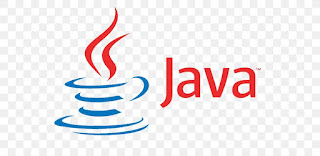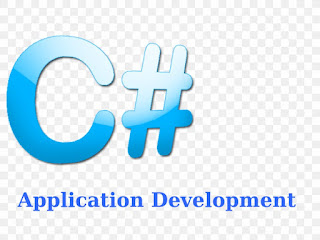Programming Language:- A programming language is a vocabulary and set of grammatical rules for instructing a computer or computing device to perform specific tasks. The term programming language usually refers to high-level languages, such as BASIC, C, C++, COBOL, Java, FORTRAN, Ada, Python and Pascal.Each programming language has a unique set of keywords (words that it understands) and a special syntax for organizing program instructions.
Programmers, software engineers, web developers, and more depend on coding languages. Coding languages allow these professionals to accurately instruct computers and similar devices in how to perform specific tasks.
By “speaking” to the computer in a language that it can easily understand and follow, coders are able to create programs capable of doing great things, from displaying an image on a screen to landing a probe on another planet.
List of the Top 20 Programming Languages

1.JavaScript (React.js and Node.js)JavaScript is a scripting language used to create and control dynamic website content, i.e. anything that moves, refreshes, or otherwise changes on your screen without requiring you to manually reload a web page. Features like:
- animated graphics
- photo slideshows
- autocomplete text suggestions
- interactive forms
An even better way of understanding what JavaScript does is to think about certain web features you use every day and likely take for granted—like when your Facebook timeline automatically updates on your screen or Google suggests search terms based on a few letters you’ve started typing. In both cases, that’s JavaScript in action.
Node. js is a JavaScript runtime which is fast and lightweight. It can be used to create fast and scalable networking applications. With Client-Side data rendering and an upper configuration, React.JS is an outright choice of JavaScript framework Developers.
THE POWER OF 3: HTML, CSS, AND JAVASCRIPT
When most people learn to code, they start with good old HTML and CSS. From there, they move on to JavaScript. Which makes sense! The three elements together form the backbone of web development.
For those not familiar:
- HTML is the structure of your page—the headers, the body text, any images you want to include
- CSS controls how that page looks (it’s what you’ll use to customize fonts, background colors, etc.)
- JavaScript is the magic third element. Once you’ve created your structure (HTML) and your aesthetic vibe (CSS), JavaScript makes your site or project dynamic.
What is JavaScript Used For?
We covered this a bit in the intro, but here’s a quick list of the main things JavaScript is used for.
- Adding interactivity to websites—yup, if you want a website to be more than a static page of text, you’ll need to do some JavaScripting
- Developing mobile applications—JavaScript isn’t just for websites…it’s used to create those apps you have on your phone and tablet as well
- Creating web browser based games—Ever played a game directly from your web browser? JavaScript probably helped make that happen
- Back end web development—yeah, JavaScript is MOSTLY used on the front end of things, but it’s a versatile enough scripting language to be used on back end infrastructure, too.
How Does JavaScript Work?
JavaScript is either embedded into a web page or else it’s included in a .js file. JavaScript is also a “client-side” language (rather than a “server-side” language), which is a fancy way of saying that it gets downloaded to site visitors’ computers, then processed.
2. Python:-
What can we say? It’s hard to have a list of top programming languages without Python. Python is often on programming language charts for good reason. That’s because Python is powerful, yet simple to learn. A high-level general programming language, Python is usable across many applications and can be great for beginners and professionals alike.
3.HTML:-
Another core technology of the World Wide Web (and thus a popular programming language) is HTML. HTML is used to define the content and structure of web pages. In this capacity, it is commonly used alongside another “programming language” called CSS.
4.CSS:-
CSS is not a programming language; it is a markup language. But, alongside JavaScript and HTML, CSS is the third core technology of the World Wide Web. Usually used with HTML, CSS helps define the visual aesthetic of HTML elements. Essentially, where HTML defines the page’s content, CSS defines the page’s overall look and feel. Programmers who are interested in web development would benefit from learning to work with both CSS and HTML.
5.C++:-
A star among application, game, and animation-software programmers, C++ offers the speed and portability needed to be used across devices and platforms, and it allows programmers the ability to reuse code, for easier program maintenance.
6.TypeScript:-
Backed by Microsoft’s significant resources, TypeScript is essentially JavaScript, but less confusing. It improves upon JavaScript in a number of ways, such as by allowing programmers to add static types (for easier error identification). TypeScript adds improved functionality to JavaScript, without reducing its effectiveness, making it a great choice for new programmers.
7. Rust:-
Rust offers speed and security, without sacrificing performance. Rust has valuable built-in documentation and features helpful error messages (so you can more easily find problems when something goes wrong). That said, for beginners, Rust may be more difficult than some of the other languages on this list.
8.Scheme:-
An older language, Scheme is used by large, established internet entities such as Reddit and Google. Scheme’s format is easy to learn and ideal for teaching functional programming.
9.Java:-
Java works exceptionally well in a number of use-cases and has long been the preferred go-to language for coding on Android. Java’s motto: Write once; run anywhere references its cross-platform abilities. This versatility, combined with the range of available extensions, can make Java a powerful addition to the programmer’s toolbox.
10.PHP:-
The code behind Facebook, Yahoo, and Wikipedia, PHP has long held an important place in the coding world. PHP is simple-to-use, integrates easily with other languages, and is supported by all major operating systems. PHP is also uniquely designed to operate effectively with databases.
11.SQL:-
Programming languages are generally used to tell computer systems what to do, but there are exceptions. SQL is a query-based language that is mostly focused on retrieving data from databases. This makes it effective when used to generate reports and sift through massive amounts of digital information. It’s just not as effective for all-purpose coding.
12. R Programming Language
Speaking of data and databases, R Programming Language was designed to help with statistical analysis and relies on a vast catalog of statistical and graphical methods. And while R Programming Language is most often used in academic projects, it has also found a place with larger companies as well (including Uber and Google).
13.C#:-
Another Java influenced programming language, C# is an accessible, general-purpose language that is as powerful as it is flexible. C# is designed specifically for use with the Windows OS (sorry Mac users) and is part of the .Net framework.











Comments
Post a Comment